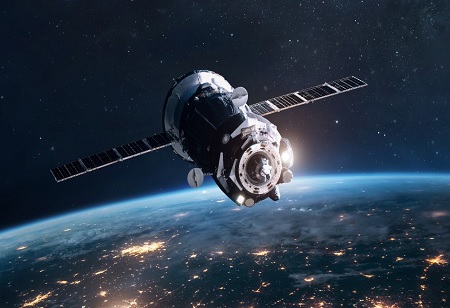
Ubiqconn Technology Eyes Boom in Southeast Asia's Satellite Market

 Ubiqconn Technology is strategically aligning itself to seize the emerging opportunities in Low-Earth Orbit (LEO) satellite development within Southeast Asia. Emphasizing the region's abundance of islands, low population density in rural areas, and rapid economic growth, the company highlights these as pivotal factors driving the significant potential for LEO satellite initiatives.
Ubiqconn Technology is strategically aligning itself to seize the emerging opportunities in Low-Earth Orbit (LEO) satellite development within Southeast Asia. Emphasizing the region's abundance of islands, low population density in rural areas, and rapid economic growth, the company highlights these as pivotal factors driving the significant potential for LEO satellite initiatives.
Referencing the Satellite Industry Association's (SIA) 2023 State of the Satellite Industry Report, projections indicate a substantial rise in global revenues within the satellite communication sector, expected to reach US$384 billion by 2022, with ground equipment contributing US$15.5 billion. The satellite market in Southeast Asia is undergoing rapid transformation. With more than 40% of the population situated in rural regions, Satellite Communication (Satcom) emerges as a critical solution, providing extensive coverage without geographical limitations, making it the preferred option for Southeast Asian countries.
Ubiqconn highlights Southeast Asia's vast archipelago, comprising nations like the Philippines, Indonesia, Malaysia, and Brunei, spanning over 25,000 islands and boasting diverse terrains, including volcanoes, mountains, tropical rainforests, and vast oceanic expanses.
Furthermore, the clustering of Southeast Asia's population in urban areas and flat terrains, contrasted with the low population density in suburban areas, creates a situation where only urban areas benefit from 4G coverage. This disparity in digital access highlights the urgent requirement for satellite infrastructure, especially in areas where economic viability or logistical hurdles hinder traditional 4G deployment.
Amidst Southeast Asia's robust economic growth, accounting for 12-15% of global GDP, the region's communication and defense imperatives underscore the indispensable role of satellites. As defense requirements vary across regions, the demand for tailored satcom equipment necessitates nimble manufacturers capable of offering bespoke solutions. While Taiwan's prowess in satellite critical components is internationally acknowledged, particularly in antenna manufacturing, the country's absence in system assembly remains conspicuous.
Furthermore, Taiwanese manufacturers' limited presence in the satellite market extends beyond Southeast Asia, with European and American ventures remaining scant. Despite aspirations from major Taiwanese players like Compal and Pegatron to penetrate the LEO satellite segment, the industry's focus predominantly gravitates towards critical components rather than comprehensive system integration.
Ubiqconn acknowledges the historical specialization of the satellite market, predominantly serving defense needs, which left operators vulnerable to bankruptcy without governmental backing. Nevertheless, the emergence of Low-Earth Orbit (LEO) satellites is challenging conventional norms, prompting Medium Earth Orbit (MEO) and High Earth Orbit (HEO) satellite operators to form partnerships with LEO counterparts to adapt to the changing terrain.
The recent efforts to consolidate, like the OneWeb-Eutelsat merger and ongoing talks between SES SA and Intelsat SA, show a proactive approach among medium Earth orbit (MEO) and high Earth orbit (HEO) satellite operators, opening up new possibilities within the satellite supply chain.

